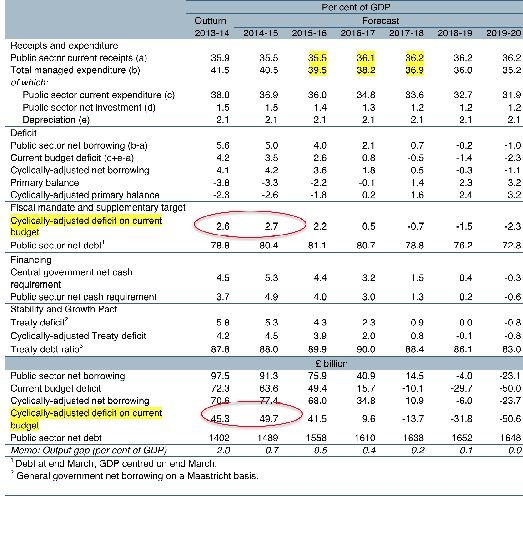Labour deficit cutting - the £50bn question
Labour says it will cut the current budget deficit by the end of the next parliament. This contrasts with the Tory plan to produce a surplus on all annual borrowing by 2018-19. How much room will Labour have?
In the table below (table 4.47 from the Office for Budget Responsibility's Economic and Fiscal Outlook) we can see, according to OBR forecasts.
In the bottom section (ignore the highlights for now - see next post) we can see Public sector net borrowing (the amount borrowed each year) is forecast to be in surplus (ie -£4.0bn) by 2018-19. This is with government spending falling as a proportion of GDP to 1938 levels, the OBR says.
The line below shows the Current budget deficit. This is the amount borrowed each year to fund current government spending ie excluding capital, or investment, spending. This is forecast to be in surplus by £50bn by 2019-20.
Labour says it will have a surplus on this measure by 2019-20. Assume the surplus is very very slightly above zero ie really the Current budget deficit is in balance rather than in fact being a Current budget surplus of £50bn seen in the table...that's the amount of room Labour has to fund current spending compared with the OBR's forecast of the government's plans, in the last year of the parliament. This £50bn can be spread over the life of the parliament, limiting cuts compared with Tory-LibDem plans. Because under current plans the net borrowing surplus is £23.1bn in 2019-20, borrowing for investment is £26.9bn that year (50-23.1) assuming Labour sticks to current investment spending plans.

Stephen Beer, 11/12/2014